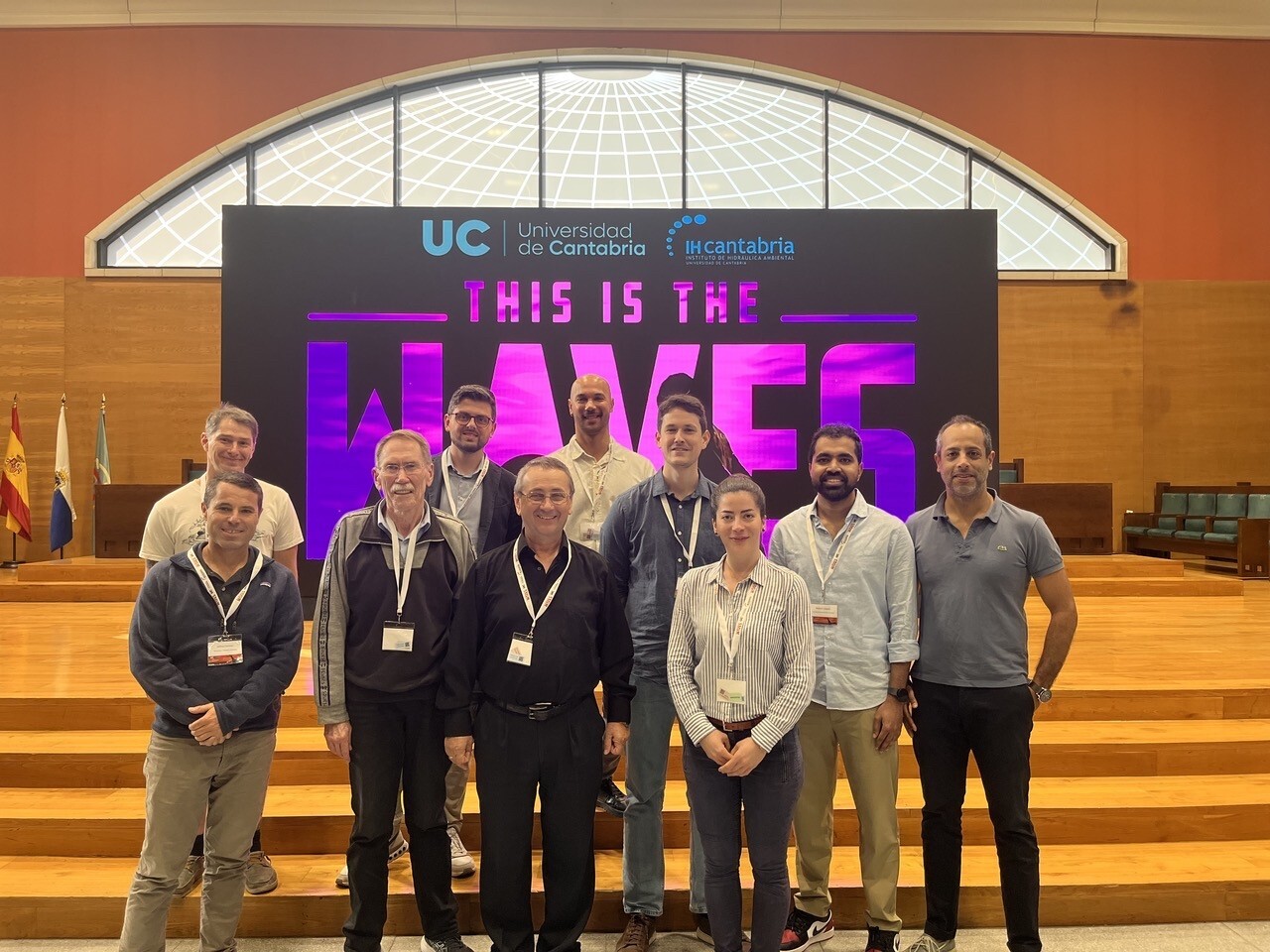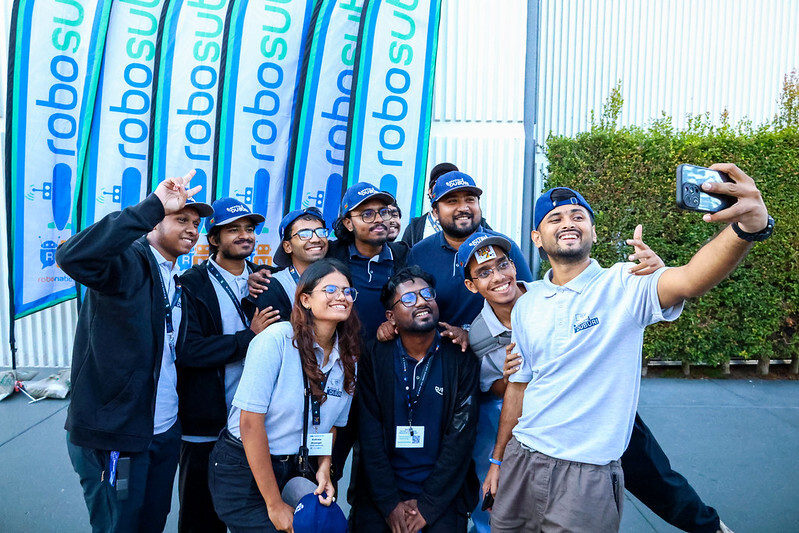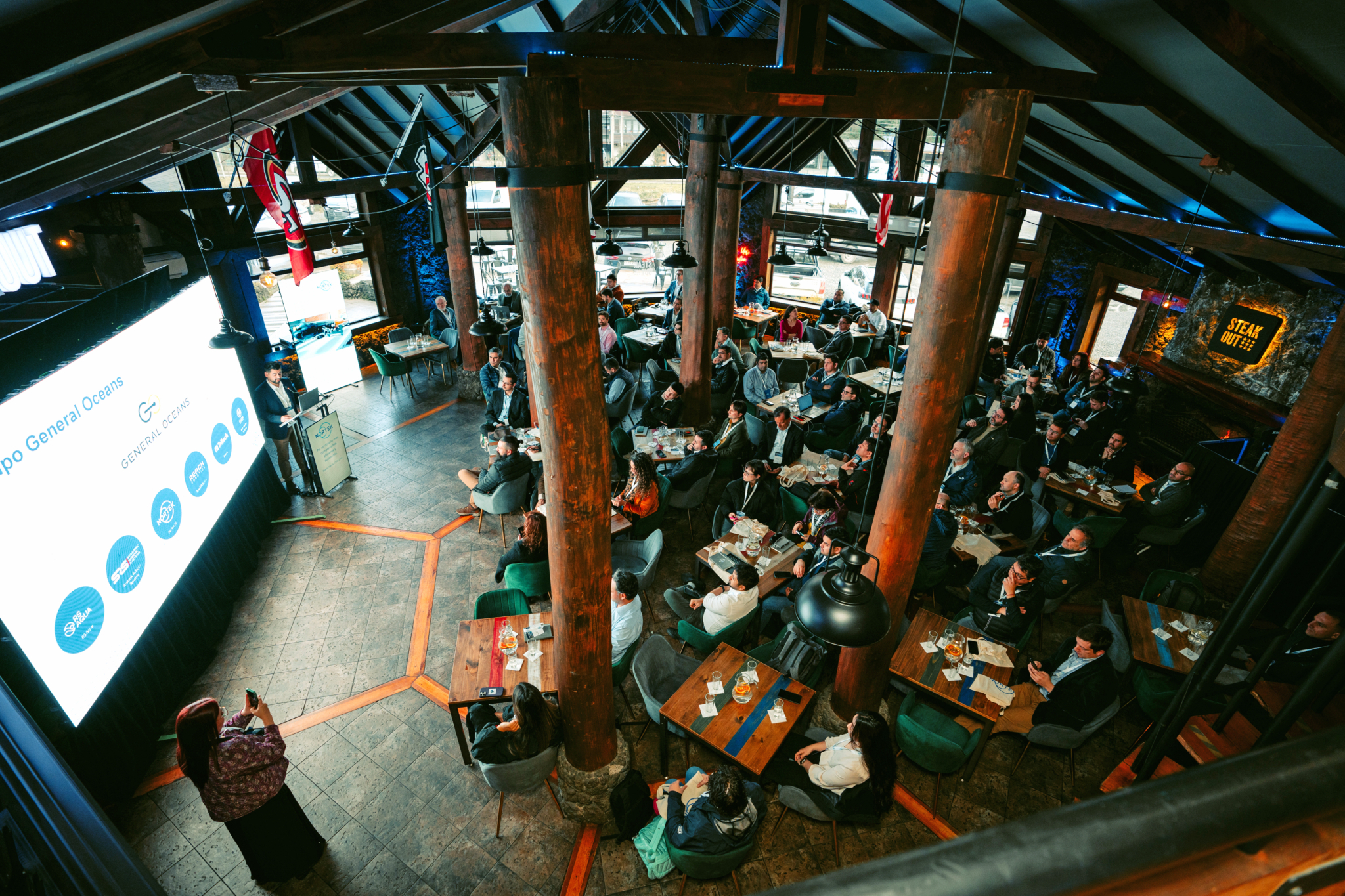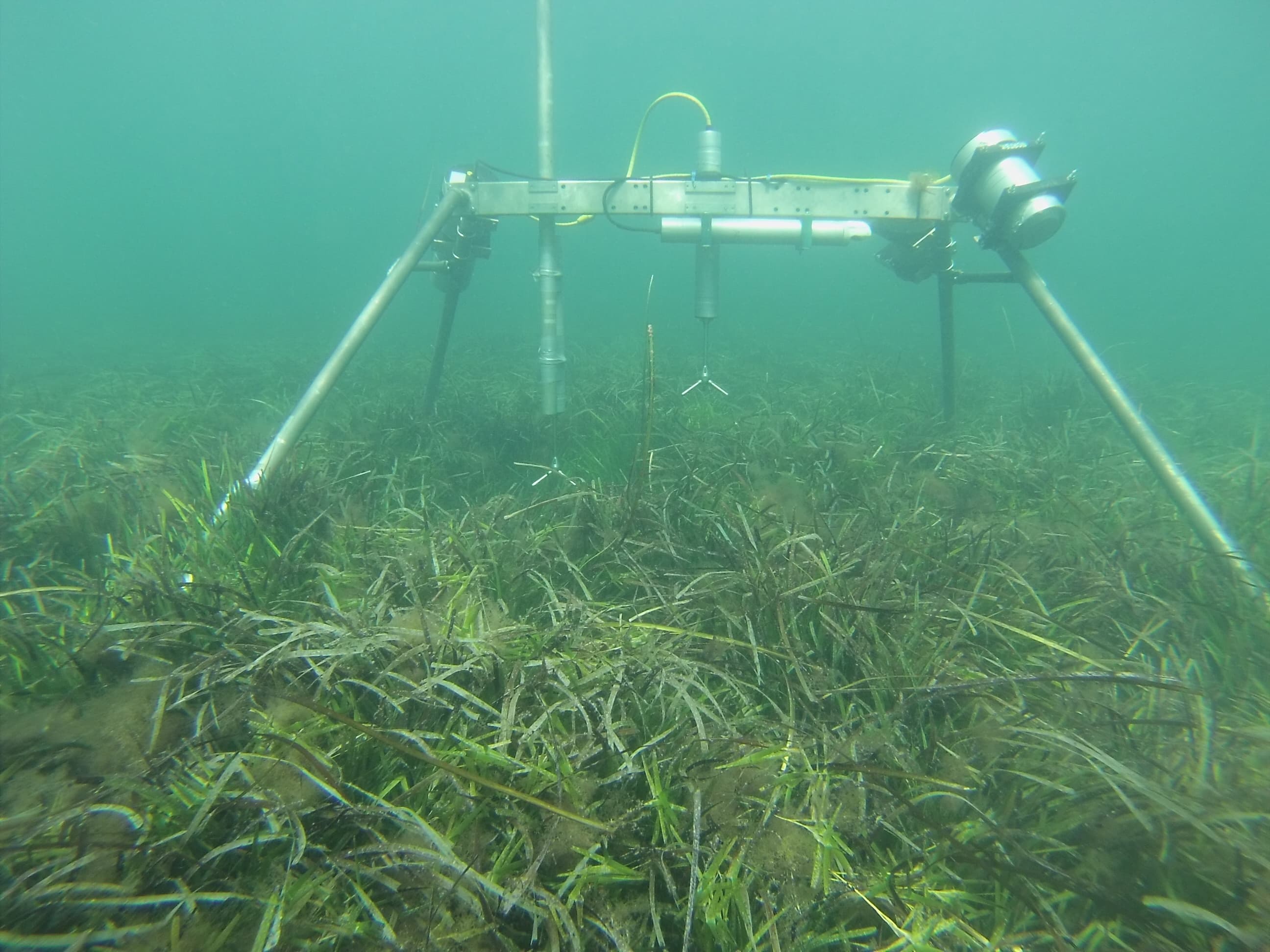
Seagrass research using Nortek instrumentation published in JGR Oceans
- Company & product news
The study, published in Journal of Geophysical Research – Oceans, used Nortek velocimeters and ADCPs to take high-resolution measurements of how water flowed within and above a seagrass meadow in Australia. The team’s findings will improve predictions of wave attenuation by seagrasses by considering multiple factors such as wave frequency (e.g. wind waves vs. swell) and seagrass blade flexibility. In turn, improved predictions reduce uncertainty in how seagrass meadows will contribute to coastal protection during storm events.
Seagrass meadows and wave interactions
Aquatic vegetation and water movement influence one another in a variety of ways. Seagrass meadows are a crucial part of coastal ecosystems and have been studied for years for their ability to dampen wave energy and protect coastlines. However, existing models used to predict how seagrass meadows will interact with waves don’t always account for the properties of the seagrass canopy, such as blade flexibility, or the wave frequency.
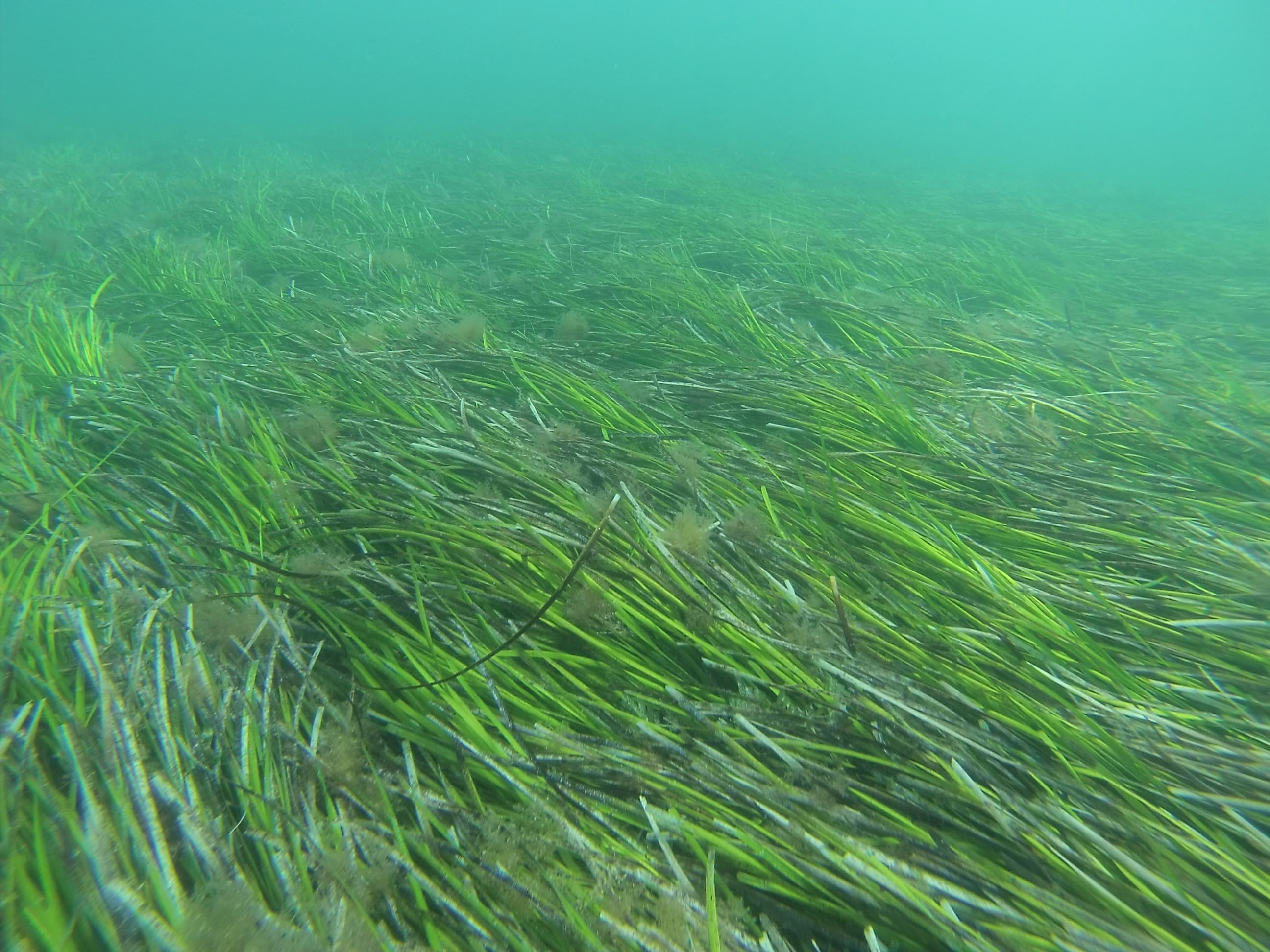
Dr. Contti Neto set out to quantify how waves dissipate across the seagrass meadow and compare the real-world observations to different predictive models, in order to improve predictions of how seagrass meadows will protect coastlines.
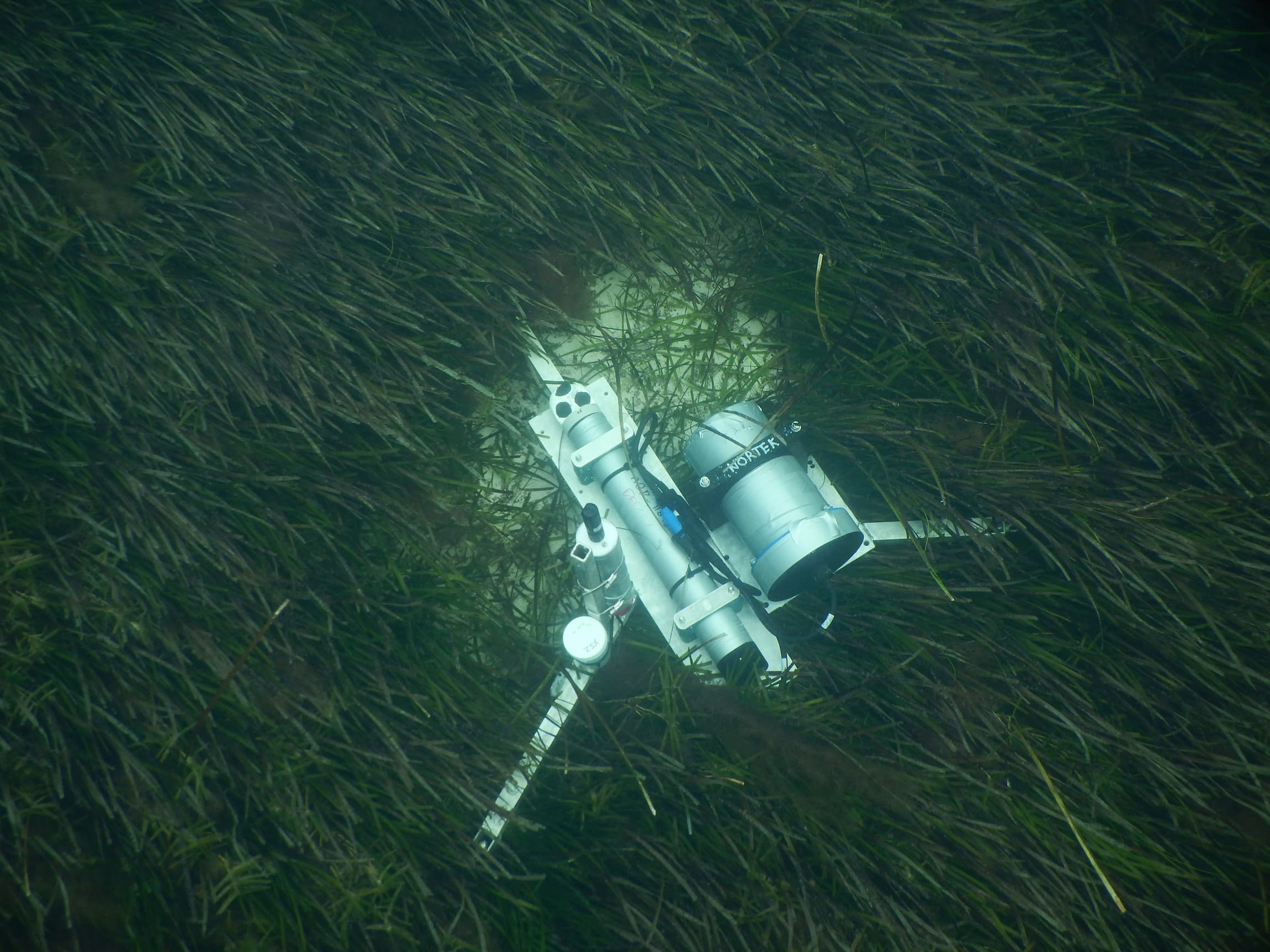
Using Nortek instruments to quantify flow
To quantify flow attenuation, Dr. Contti Neto and the team measured wave and current velocities at different sites throughout a seagrass meadow in Bickley Bay on the eastern side of Wadjemup / Rottnest Island, offshore from Western Australia. The meadow was formed of a robust species of seagrass (Posidonia australis), and seagrass blade thickness was measured from the areas identified as the densest zones of the meadow.
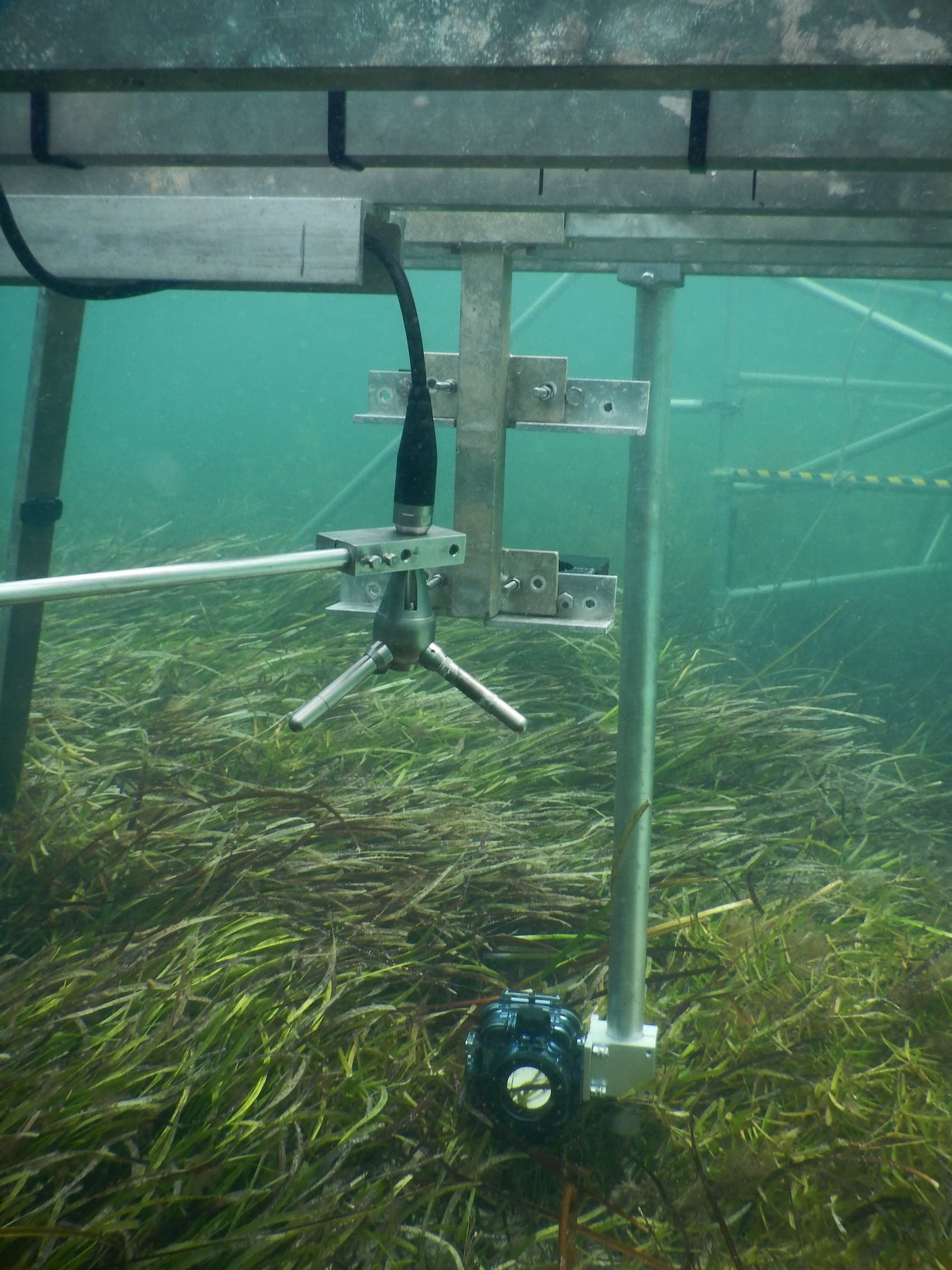
The wave and current measurements were made using an Aquadopp Profiler using High Resolution mode and a Vector velocimeter. The Aquadopp Profiler measured “free-stream” velocity, whereas the velocimeters captured smaller-scale flow processes occurring within the seagrass canopy. The velocimeters enabled the researchers to take measurements of how water flowed very close to the seabed, providing a more complete picture of the hydrodynamics in the meadow.
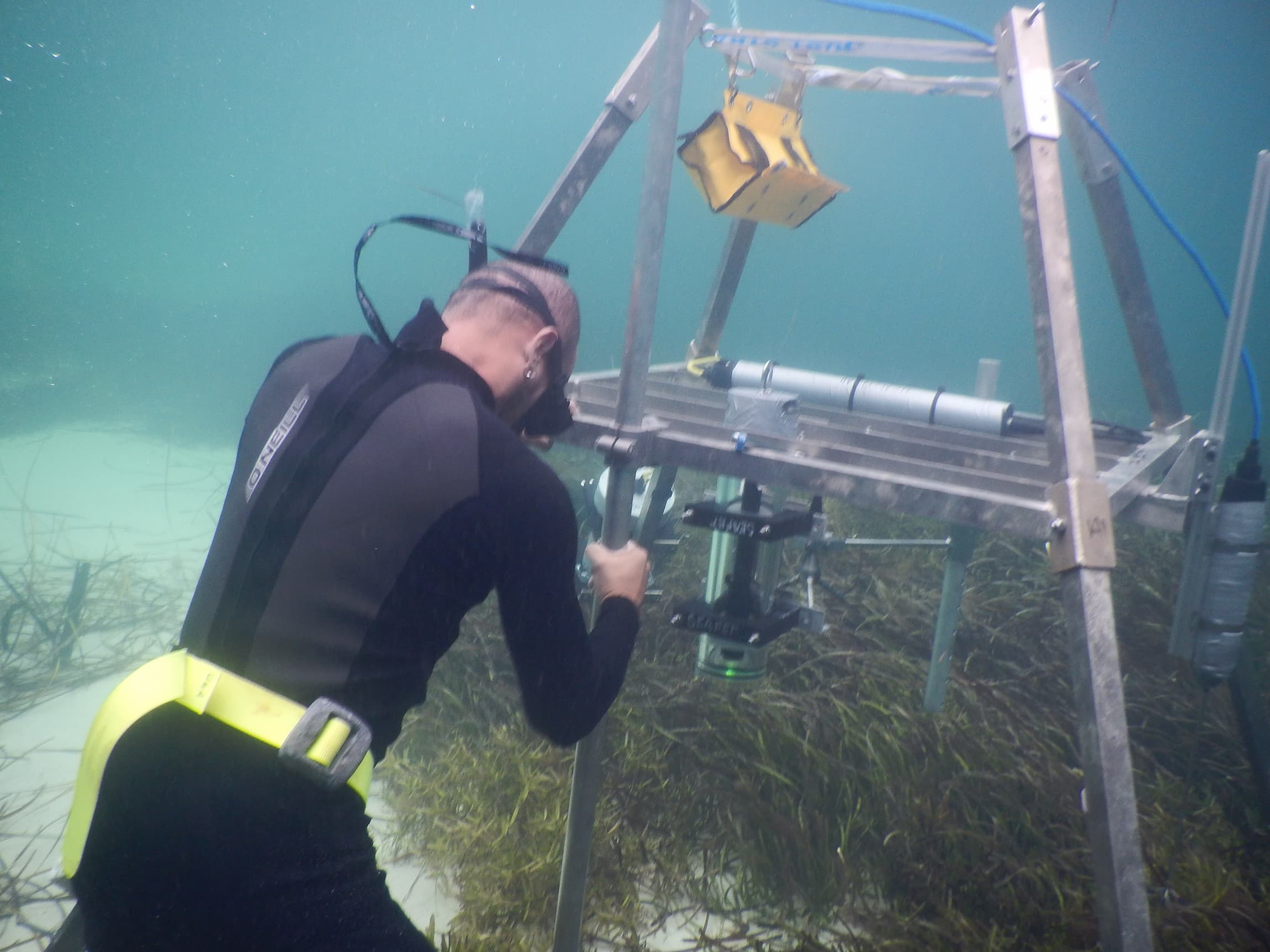
Improved predictions of wave attenuation by seagrass meadows
By analyzing the flow measurements taken throughout the seagrass meadow, and considering factors such as wave type, blade flexibility, and changes in wave energy due to other influences, Dr. Contti Neto and the team created additional context on how real-world waves will interact with seagrass environments. They developed a hybrid model which improve the accuracy of predictions of wave dissipation across benthic habitats like these by considering in-canopy flow dynamics.
Seagrass meadows are becoming an increasingly studied habitat for their ability to protect coastlines from storm events. Better understanding how these environments interact with physical ocean properties allows for improved predictability of how storm events will affect coastal areas.
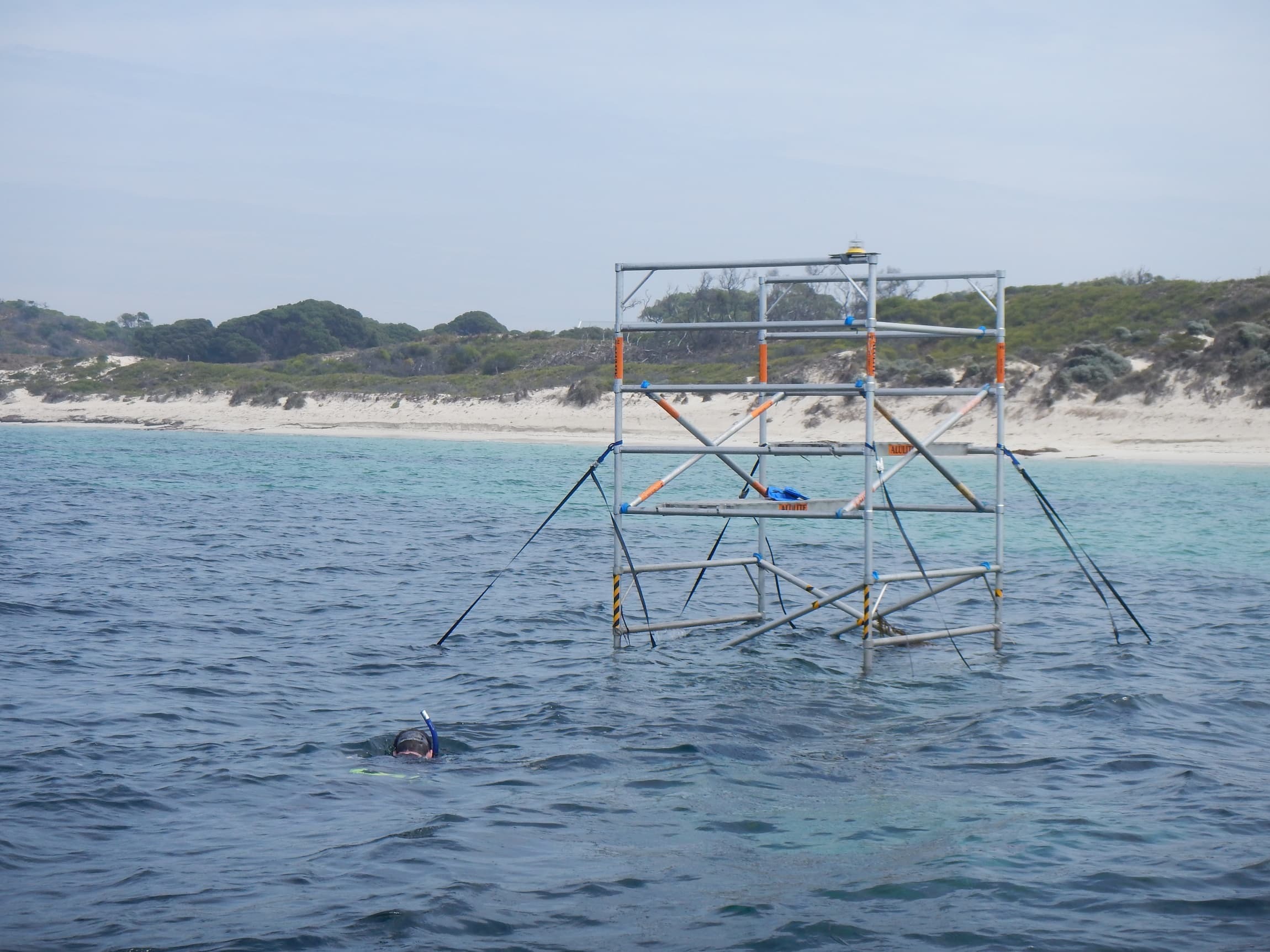
Oceanographer Dr. Contti Neto specializes in investigating sediment transport, using echosounders to quantify sediment or biomass, wave analysis and turbulence. He received his PhD from the University of Western Australia and is currently a member of Nortek’s support team.
Read the full paper in JGR Oceans. Contact Dr. Contti Neto with any questions or to discuss a similar application of Nortek instruments.
